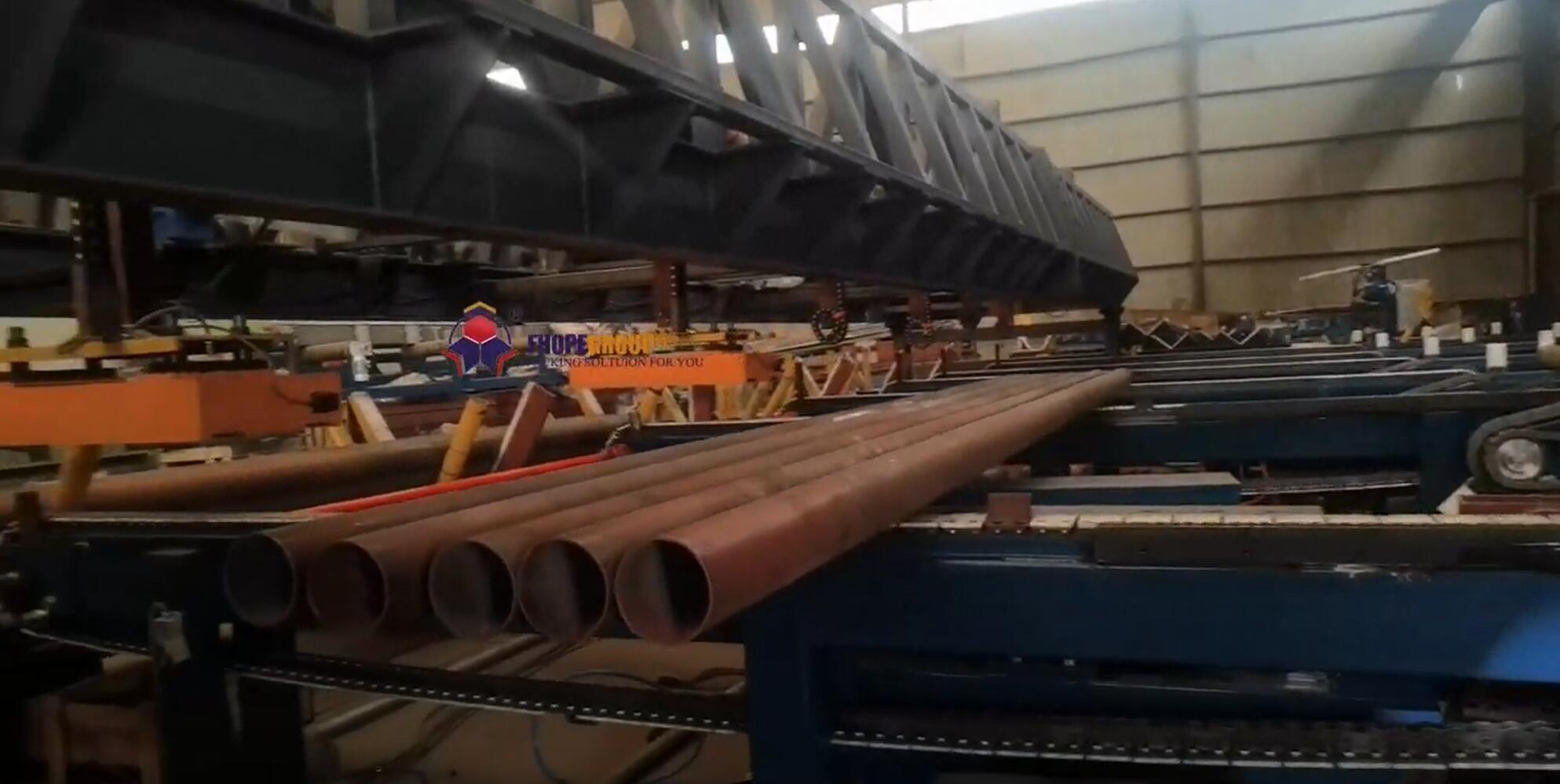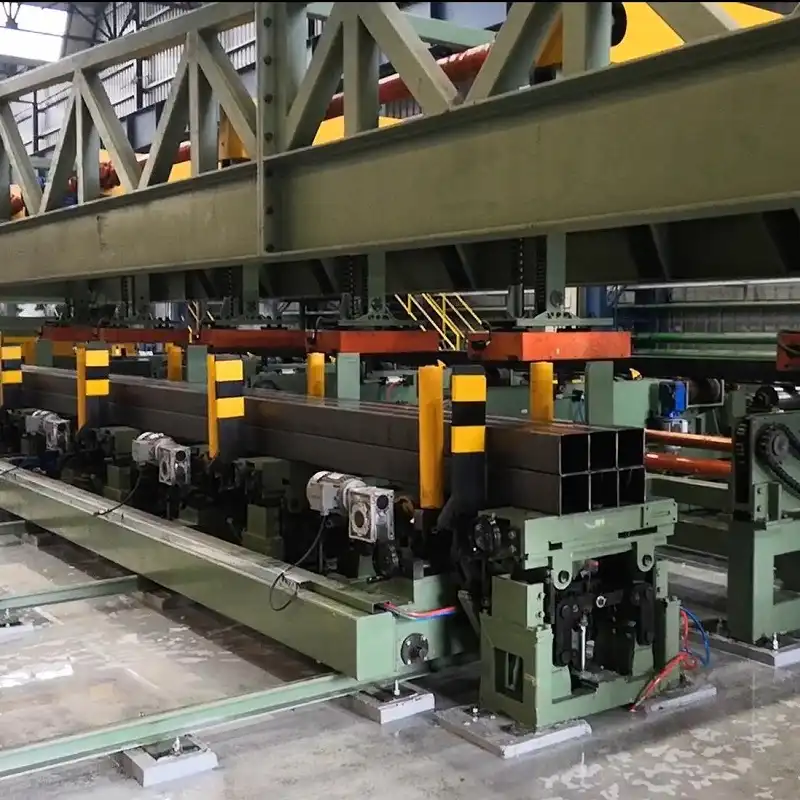Optimizing Pipe Handling: An Introduction to Automatic Socket Pipe Palletizers
The efficient handling and packaging of pipes, especially those with sockets, present unique challenges in manufacturing environments. Manual palletizing can be labor-intensive, pose ergonomic risks, and lead to inconsistencies in stacking. Automatic socket pipe palletizers offer a sophisticated solution to streamline this process, enhancing productivity and safety.
What is an Automatic Socket Pipe Palletizer?
An Automatic Socket Pipe Palletizer is a specialized automated system designed to receive bundles of pipes, orient them correctly (paying special attention to sockets if present), and stack them in predefined patterns onto pallets or, as specified in some systems, wooden carts. These machines are crucial in high-volume pipe production facilities.
Key capabilities often include handling:
- Pipe Materials: Commonly PVC, PE, and PP.
- Pipe Lengths: Versatile systems can handle ranges such as 500mm to 1000mm and 3000mm to 6000mm.
- Pipe Type: Suitable for pipes both with and without sockets.
- Packaging Base: Configurable for standard pallets or specialized wooden carts.

steel tube bundle strapping machine How Does an Automatic Pipe Palletizing System Work?
While designs vary, the core operational principle of an automatic socket pipe palletizer involves several key stages:
- Bundle Infeed: Bundles of pipes arrive from upstream processes (like extrusion or bundling) via conveyors.
- Detection and Orientation: Sensors detect the incoming bundle's size, shape, and position. For socketed pipes, specialized mechanisms may rotate or align pipes to ensure sockets nest correctly or face outwards as required by the stacking pattern.
- Layer Formation: The system arranges the pipes or bundles into a specific layer pattern programmed by the operator via a control interface.
- Robotic Handling: A robotic arm, equipped with appropriate grippers (vacuum, clamp, or fork-style), lifts the formed layer or individual bundles.
- Stacking: The robot accurately places the layer onto the pallet or cart, building the stack layer by layer. Sophisticated systems can interlock layers for stability.
- Pallet/Cart Management: Empty pallets or carts are automatically fed into the palletizing station, and full ones are discharged for wrapping, strapping, or transport.
- Optional Integration: Many systems can integrate seamlessly with downstream equipment, such as an automatic strapping machine to secure the final load on the cart or pallet.
Key Features and Considerations in Pipe Palletizing Automation
When evaluating or understanding these systems, consider the following:
- Socket Handling: The ability to manage the irregular shape introduced by sockets without damaging them is critical.
- Throughput Rate: Systems vary in speed, with some capable of handling significant volumes (e.g., up to 60 bundles per minute, depending on bundle size and complexity).
- Flexibility & Changeover: The ease of adjusting the system for different pipe diameters, lengths, and stacking patterns is important for manufacturers with diverse product lines.
- Control System: Modern palletizers feature user-friendly HMIs (Human-Machine Interfaces) for programming patterns, monitoring operations, and diagnosing issues.
- Footprint & Layout: The physical space required and how it integrates into the existing factory layout.
- Safety Standards: Compliance with relevant safety regulations (e.g., guarding, emergency stops) is paramount.
Benefits of Implementing Automated Pipe Palletizing

Automating the pipe palletizing process brings several operational advantages:
- Increased Throughput and Efficiency: Automation significantly outpaces manual handling, increasing overall production output.
- Improved Stack Quality and Consistency: Precise robotic placement creates stable, uniform stacks, reducing the risk of product damage during storage and transit.
- Enhanced Worker Safety: Eliminates repetitive heavy lifting and awkward postures associated with manual palletizing, reducing musculoskeletal injury risks.
- Labor Optimization: Frees up personnel from manual palletizing tasks, allowing them to focus on higher-value activities like quality control or machine supervision.
- Reduced Product Damage: Gentle and precise handling minimizes scratches, dents, or socket damage compared to manual methods.
- Better Space Utilization: Consistent and potentially denser stacks can optimize warehouse space.
Applications in Industry
Automatic socket pipe palletizers are primarily used by manufacturers of plastic pipes for various sectors, including:
- Construction (Drainage, water supply, conduit)
- Utilities
- Telecommunications
- Agriculture (Irrigation)
([Learn more about plastic pipe applications via The Plastics Pipe Institute])
Conclusion
Automatic socket pipe palletizing systems represent a significant advancement in pipe manufacturing logistics. By automating the physically demanding and repetitive task of stacking pipe bundles, these machines enhance efficiency, improve safety, ensure consistent quality, and contribute to a more streamlined production flow, particularly when dealing with the complexities of socketed pipes and specific packaging requirements like wooden carts.